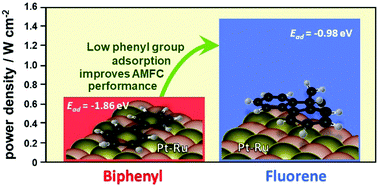当前位置:
X-MOL 学术
›
Energy Environ. Sci.
›
论文详情
Our official English website, www.x-mol.net, welcomes your
feedback! (Note: you will need to create a separate account there.)
Rational design of polyaromatic ionomers for alkaline membrane fuel cells with >1 W cm−2 power density†
Energy & Environmental Science ( IF 32.4 ) Pub Date : 2018-09-17 00:00:00 , DOI: 10.1039/c8ee02192a Sandip Maurya 1, 2, 3, 4 , Sangtaik Noh 4, 5, 6, 7 , Ivana Matanovic 4, 8, 9, 10, 11 , Eun Joo Park 1, 2, 3, 4 , Claudia Narvaez Villarrubia 1, 2, 3, 4 , Ulises Martinez 1, 2, 3, 4 , Junyoung Han 4, 5, 6, 7 , Chulsung Bae 4, 5, 6, 7 , Yu Seung Kim 1, 2, 3, 4
Energy & Environmental Science ( IF 32.4 ) Pub Date : 2018-09-17 00:00:00 , DOI: 10.1039/c8ee02192a Sandip Maurya 1, 2, 3, 4 , Sangtaik Noh 4, 5, 6, 7 , Ivana Matanovic 4, 8, 9, 10, 11 , Eun Joo Park 1, 2, 3, 4 , Claudia Narvaez Villarrubia 1, 2, 3, 4 , Ulises Martinez 1, 2, 3, 4 , Junyoung Han 4, 5, 6, 7 , Chulsung Bae 4, 5, 6, 7 , Yu Seung Kim 1, 2, 3, 4
Affiliation

|
Alkaline membrane fuel cells (AMFCs) show great potential as alternative energy conversion devices to acidic proton exchange membrane fuel cells (PEMFCs). Over the last decade, there has been significant progress in the development of alkaline-stable polyaromatic materials for membrane separators and ionomeric binders for AMFCs. However, the AMFC performance using polyaromatic ionomers is generally poor, ca. a peak power density of <400 mW cm−2. Here, we report a rational design for polyaromatic ionomers which can minimize undesirable phenyl group interaction with hydrogen oxidation catalysts. The AMFC using a newly designed aryl ether-free poly(fluorene) ionomer exhibits a peak power density of 1.46 W cm−2, which is approaching that of Nafion-based PEMFCs. This study further discusses the remaining challenges of high-performing AMFCs.
中文翻译:

功率密度 > 1 W cm -2的碱性膜燃料电池用聚芳族离聚物的合理设计†
碱性膜燃料电池(AMFCs)具有巨大的潜力,可以替代酸性质子交换膜燃料电池(PEMFCs)。在过去的十年中,用于膜分离器的碱性稳定多芳族材料和用于AMFC的离聚物粘合剂的开发取得了重大进展。但是,使用聚芳族离聚物的AMFC性能通常较差。<400 mW cm -2的峰值功率密度。在这里,我们报告了一种合理的设计,可以最大限度地减少与氢氧化催化剂发生的不希望有的苯基相互作用的聚芳族离聚物。使用新设计的不含芳基醚的聚(芴)离聚物的AMFC的峰值功率密度为1.46 W cm -2,这接近基于Nafion的PEMFC的PEMFC。这项研究进一步讨论了高性能AMFC的剩余挑战。
更新日期:2018-09-17
中文翻译:

功率密度 > 1 W cm -2的碱性膜燃料电池用聚芳族离聚物的合理设计†
碱性膜燃料电池(AMFCs)具有巨大的潜力,可以替代酸性质子交换膜燃料电池(PEMFCs)。在过去的十年中,用于膜分离器的碱性稳定多芳族材料和用于AMFC的离聚物粘合剂的开发取得了重大进展。但是,使用聚芳族离聚物的AMFC性能通常较差。<400 mW cm -2的峰值功率密度。在这里,我们报告了一种合理的设计,可以最大限度地减少与氢氧化催化剂发生的不希望有的苯基相互作用的聚芳族离聚物。使用新设计的不含芳基醚的聚(芴)离聚物的AMFC的峰值功率密度为1.46 W cm -2,这接近基于Nafion的PEMFC的PEMFC。这项研究进一步讨论了高性能AMFC的剩余挑战。











































 京公网安备 11010802027423号
京公网安备 11010802027423号